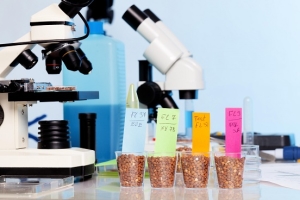GMOs are a very hot-button topic in today’s society. However, before we start discussing the cause and effects of GMO foods, let’s first learn a little about how GMOs came to be. The first thing to understand about GMO foods is that “GMO” stands for Genetically Modified Organisms. It is accomplished by introducing a new trait into the DNA of an organism, allowing genetic control over its behavior.
Discussion about GMOs generally centers around the modification of food products. Genetically modified plants have been around since the 1980s, with its roots in herbicide-resistant tobacco plants. The success in herbicide resistance led to developing both insect- and virus-resistant plants as well. Genetic crop modifications in the U.S. began to be approved by the mid-1990s. This resulted in tomatoes exhibiting longer shelf lives, followed shortly by canola, corn, cotton, soybeans and squash. Since this time, there have been fluctuations in the risk of these foods being GMOs. Genetically modified tomatoes, for example, are no longer produced commercially.
While GMO foods have given us some useful advantages in the production and storage of crops, they have also given us issues to be aware of.
Increasing Herbicide Use Due to GMOs
The majority of genetically modified crops are engineered to be highly resistant to herbicides. This allows for farmers to increase their use of toxic herbicides to get a higher yield from their fields. Some issues that arise after the overuse of herbicides are “superweeds” and “superbugs” that are resistant to the herbicides as well. This escalates to cause the farmers to use more powerful herbicides. These toxic herbicides cause environmental issues as well as increased levels of residue found on genetically modified foods. Some of these toxic herbicides (such as Roundup) have been linked with sterility, birth defects and cancer.
Genetically Modified Side Effects
As genes are mixed from unrelated species, this opens the door for unpredictable side effects. These experimental GMOs can result in new allergens and nutritional deficiencies that are passed on to the consumer market through the food ingredients. This has been a contributing factor in the increasing number of food allergies found in the U.S. today.
GMOs are found in as much as 80% of conventional processed food in the U.S., causing nearly all of us to come into contact with them every day. As the awareness has grown over recent years, more and more producers have determined to ensure their food products contain little to no GMO ingredients.
After highlighting some of the biggest problems born from GMOs, what do you think about this issue? Let us know in the comments below!
Sources:
http://www.nongmoproject.org/learn-more/what-is-gmo/
http://www.aaemonline.org/gmopost.html
http://en.wikipedia.org/wiki/Genetically_modified_crops

